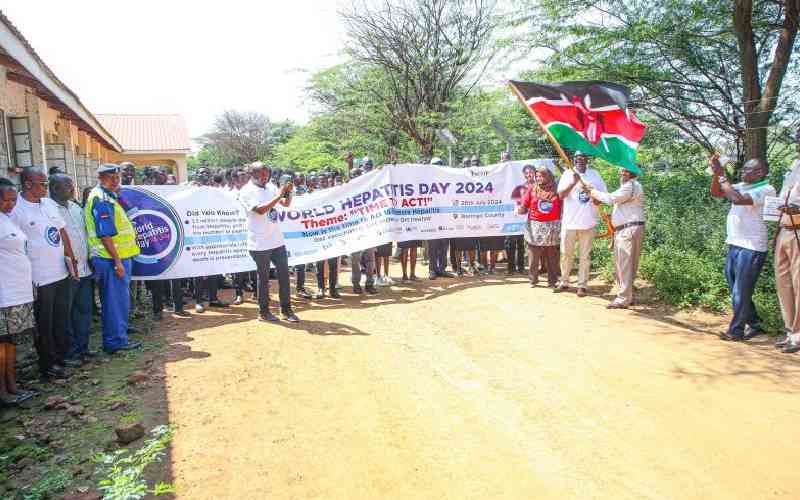
A lack of awareness about the Social Health Authority (SHA) and its benefits has led to sluggish registration among Kenyans across the country. This issue has come to light during the ongoing mobilisation exercise led by SHA officials, the Ministry of Health and legislators.
In an interview with The Standard, SHA Chief Executive Officer Robert Ingasira explained that many Kenyans do not fully understand the scheme. He attributed the slow uptake of SHA registration to limited awareness about its benefits, particularly its tariffs.
"The problem we have been facing is a knowledge gap. For example, the public has not had sufficient information on how to access these services," Ingasira said.
He added, "We are committed to ensuring that the public is well-informed about the services offered under Primary Healthcare, the Social Health Insurance Fund, and the Emergency, Chronic, and Critical Illness Fund (ECCIF)."
The mobilisation effort follows the repeal of the National Health Insurance Fund (NHIF), which had been operational since 1966. SHA officially took over operations on October 1.
The Primary Healthcare Fund and the Emergency, Chronic, and Critical Illness Fund are financed by the exchequer, while the Social Health Insurance Fund (SHIF) is funded through individual contributions, capped at 2.75 per cent of gross income.
The Primary Healthcare Fund covers services at Level 2, 3, and 4 facilities, such as dispensaries and health centres, while SHIF supports services at Level 4, 5, and 6 hospitals.
- PSs urge Kenyans to embrace SHA for affordable care
- 24.4 million Kenyans now on SHA, Duale cites drastic reforms
- Private hospitals fault CS Duale for closing 983 health facilities
- Nurses union backs CS Duale's order to close ill-equipped hospitals
Keep Reading
For individuals who exhaust their SHIF benefits, the Emergency, Chronic, and Critical Illness Fund provides additional support, particularly for care at Level 6 hospitals.
Ingasira acknowledged that SHA had not done enough to sensitise Kenyans about the scheme.
"Being the festive season, most families have travelled upcountry, and we are taking advantage of functions to activate SHA," he said.
"We are utilising sporting and cultural events to engage the public and provide information about the benefit package and access to services," he said.
Individuals are also able to confirm their registration status and add dependants. Those in the informal sector are being assisted in understanding their monthly contributions to SHIF through means testing.
Ingasira noted that MPs and local leaders are helping to coordinate the registration efforts.
"MPs and leaders are on the ground coordinating the events, and registration numbers are beginning to rise. I can confidently tell you that we are now crossing the 17 million mark, and I expect to close the year at 20 million," Ingasira said.
Kirinyaga County is leading in registration, with at least 156,636 (25.7 per cent) of the population enrolled, followed by Bomet with 210,783. Other counties with high registration include Elgeyo Marakwet, Embu, Nyeri, Lamu, Kisumu, Kiambu, Tharaka Nithi, and Kericho.
Counties with the lowest registration rates include Isiolo, Narok, Trans Nzoia, Tana River, Kitui, Busia, Kilifi, Migori, Baringo, and Vihiga. On Tuesday, top officials visited Mbale in Vihiga during the Maragoli Cultural Festival to encourage residents to register. In Vihiga, only 84,118 people have registered for SHA out of a target population of 590,013.
 The Standard Group Plc is a multi-media organization with investments in media
platforms spanning newspaper print
operations, television, radio broadcasting, digital and online services. The
Standard Group is recognized as a
leading multi-media house in Kenya with a key influence in matters of national
and international interest.
The Standard Group Plc is a multi-media organization with investments in media
platforms spanning newspaper print
operations, television, radio broadcasting, digital and online services. The
Standard Group is recognized as a
leading multi-media house in Kenya with a key influence in matters of national
and international interest.











